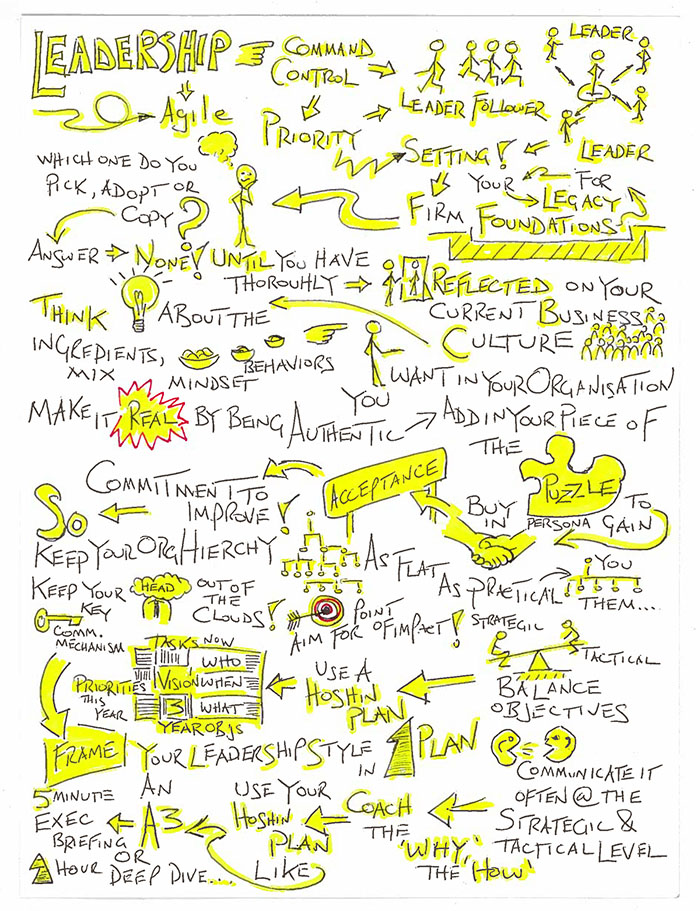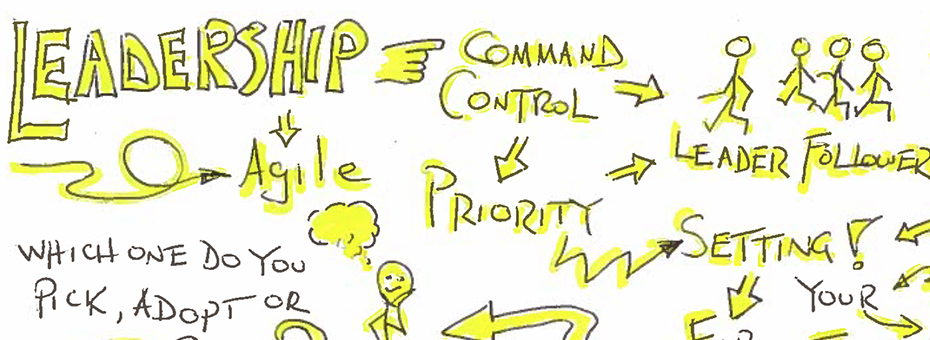Agile, kata, command, control, leader – follower, leader – leader, priority setting, the foundations and legacy you wish to leave behind …
I don’t know about you, but there is such a swell of materials and books on these topics, but which one do you pick, follow, or adopt? Good question, hey …
The bottom line — don’t copy, or consider following or adopting one of these many approaches until you have thoroughly reflected long and hard on your current business culture and how you want that culture to evolve and change, that is if you are able to really influence a positive change taking place, or if you can influence the stakeholders who set and govern the current culture today that you believe needs to change for tomorrow.
Why not just copy?Everyone’s organization is different, but one thing I have learnt is a ‘cut-and-paste’ approach probably won’t work because you are faking something that probably can’t be truly replicated as seen, witnessed, or read.
Everyone’s organization is different, but one thing I have learnt is a ‘cut-and-paste’ approach probably won’t work because you are faking something that probably can’t be truly replicated as seen, witnessed, or read.
I often reflect on my visits to Toyota through the BAMA organization (Bluegrass Automotive Manufacturers Association, suppliers to Toyota in North America) or as a supplier, and think about the comments from Toyota staff about opening the doors to let anyone come in and see what they do. Truly they know the clear majority of businesses will never be able to create their culture or be as successful as them, so they can let folks come in and look because they can’t catch them let alone beat them. Seventy years of ingrained problem solving and learning culture is a huge gap to close, a nice place to be in, I guess, and the billions of dollars profit annually speaks to reinforce that they have the right leadership culture to yield results.
I think all those things mentioned in my opening sentence are ingredients into the formula many of you need to experiment with to get the ‘mix’ right for your organizations and or team(s). Something often overlooked is adding that piece of you that will make it real. Don’t forget to add in a bit of your ‘persona’ as a manager to make it a truly real leadership approach for you and your colleagues. It will help you gain consensus, buy-in, and ultimate acceptance from those you wish to lead that what you are saying needs to be done to improve your business.
In recent years when I have looked at leadership in relation to the structure I manage through, I instinctively now seem to always gravitate to applying flat managerial structures. By that I mean as flat a structure as possible and practical to do so there are not too many layers between you and what you are supposed to impact through your team or the organization to deliver value. This ensures you are not too remote, inaccessible, or seen as a ‘head-in-the-clouds’ guy operating at 30,000 feet.
There is always a fine line between strategic and tactical leadership and often leaders just like or want to play in one camp or the other. I have found with the most successful and transparent leadership styles you need to be more than comfortable doing both together but learn how to ratchet up or ratchet down strategy vs. tactical action dependent on where the business priorities are set in the short to medium term, but never losing sight of the long-term vision.
Don’t just delegate, but empower with delegation, using your strategy in a manner so those who work for you can tactically see how they can yield a result or positive outcome. Coach the ‘why’ and get your team members to act like leaders by encouraging them to tell you what they intend to do (as a leader), without you having to bark the commands down to them, as is all too often the approach in traditional management structures with many levels producing a diluted or incomplete message or response.
This takes time to do of course, as you need to ensure you have the right folks in the right seats to allow this ‘leader who can promote another leader mentality’ to grow and flourish.
Quite often I have leaned on the hoshin planning tool and approach from a leadership perspective for developing the “leader who can promote another leader mentality.”
I have found this to be a great coaching tool that binds the business ‘vision’ and three-year strategy to year-by-year tactical deployment, and the immediate priorities over the next 12 months into one cohesive planning and execution approach for leadership and objectives setting.
One piece of paper convening a compelling message and detailing the strategic to tactical plan for positive outcomes to hit the business ‘vision’ is for any leader a key communication mechanism to promote their leadership style. Then from a run and maintain perspective there is only one key document as the leader you will need to live with / update. As with an A3 document approach, for instance, you can use your hoshin plan as either the five-minute executive level strategic briefing tool or spend an hour or more drilling down to the tactical level explaining the detail, dependent on the audience you need to convince or sell your plan to at that time.
Hope you find this insight of benefit as you evolve your leadership style to tap into cultural and business improvement.

Watch an animation of the sketch.



